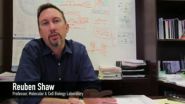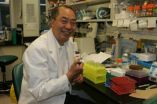(Press-News.org) Researchers have created the first comprehensive library of genetic switches in plants, setting the stage for scientists around the globe to better understand how plants adapt to environmental changes and to design more robust plants for future food security.
The collection, which took more than 8 years and $5 million to create, contains about 2,000 clones of plant transcription factors, nature's genetic on/off switches. Manipulating these transcription factors enables scientists to improve plant traits such as cold resistance or seed quantity. The research will be published July 17 in the journal Cell Reports.
"[Transcription factors] are like smart missiles that go into the nucleus and bind to specific sequences of DNA," said USC Dornsife College of Letters, Arts and Sciences Dean Steve Kay, corresponding author on the study. "They will regulate genes, switching them on or off, according to how that cell needs to respond to its environment."
The library's clones of these "master switches" are stored in microtiter plates, which will be distributed to scientists worldwide, helping those in the underfunded field of plant research. Of all biomedical research, the federal government spends approximately 1 percent on plant research, according to the authors.
"Given how important food is to human health, that's rather concerning," Kay said. "Most people in the U.S. aren't worried about starvation, but they are worried about dying of cancer. To those of us who stand in the aisle of the supermarket, it's hard to believe there could be anything like a food shortage. It's like climate change — it's not often right in front of your eyes."
"We wanted to make a high fidelity, gold standard collection of transcription factors that's going to serve the plant community all over the world," said Kay, who researches circadian rhythms, or the biological clock, in plants.
Jose L. Pruneda-Paz, co-first author on the paper, explained that the collection will "ultimately, help us understand at the molecular level the mechanisms of how plants work." Pruneda-Paz helped create the library as a postdoctoral researcher, first in Kay's laboratory at The Scripps Research Institute in La Jolla, California, then at the University of California, San Diego, where he is now a faculty member.
Kay elaborated: "Along the way we are going to understand the wiring — the instruction manual — for how plants grow and develop. From that knowledge base comes all the translational opportunities."
The clones in the library were taken from Arabidopsis, a flowering plant related to cabbage and mustard.
"You can think of Arabidopsis as the mouse of the botanical world," Kay said. "In the same way we learn a great deal about human biology from flies and mice, we learn a huge amount about clock biology because Arabidopsis is a great plant to grow in the lab."
Pruneda-Paz and Ghislain Breton, another former postdoctoral researcher in Kay's lab and co-first author of the study, recount what first led to the idea of creating a library in 2006.
The scientists were attempting to understand how plants adapt to cycles of light and dark, and zeroed in on the production of CCA1 and LHY, transcription factors that regulate Arabidopsis clock genes. Traditionally, researchers decipher the function of a gene by mutating the gene and seeing whether those mutations are responsible for a certain phenotype.
But when this method didn't work, the researchers decided to "use this reverse genetics approach," Pruneda-Paz explained. "Rather than trying to do a mutation to find a gene, we could clone all the transcription factors and then figure out which transcription factors bind and regulate the expression of CCA1. For this, we started this collection."
Breton and Pruneda-Paz oversaw the initial construction of the library. In 2010 when Breton left for an assistant professorship at the University of Texas, in Houston, Pruneda-Paz completed the project. To create the library, the team received grants from the National Institutes of Health (NIH) and other grants for a total of approximately $5 million.
Pruneda-Paz and Kay finished the project at UCSD and USC, where they were aided by a robotic platform that can conduct thousands of experiments per day.
"So the goal behind this was to build something that can be the foundation of many other projects," Breton said, adding that already 70 research projects in the U.S. and Europe have resulted from the library. "It will not only be used for circadian clock research, but for many other plant biology projects in the future."
One study made possible by the library was published in Current Biology on July 7. In the research, Kay's laboratory learned how plants regulate their gene expression in the cold. Using the library, they conducted tests isolating an interaction between two key genes — LUX and CBF1 — now known to be responsible for freezing tolerance in plants.
The research showed how plants adapt to temperature changes during the normal course of the day-night cycle, and to extreme temperature change such as frost.
"We had very little idea how cold intersected with the clock and this really reinforced the idea that transcriptional regulation is key," said first author on the Current Biology study Brenda Chow, a research associate in Kay's lab who will soon start a position at GenBank, a genetic sequence database in Bethesda, Maryland.
"The library has been very useful across the plant community," Chow said. "Specifically for my project, it was a unique way to identify the interaction between CBF1 and LUX. It would have been very difficult to identify this any other way."
INFORMATION:
The research in the Cell Reports study was supported by the National Institute of General Medical Sciences of the National Institutes of Health (award numbers R01GM056006, R01GM067837 and RC2GM092412 to Kay and R01GM056006 to Prudena-Paz).
First comprehensive library of master genetic switches in plants
Clone collection supports design of more robust plants for future food security
2014-07-17
ELSE PRESS RELEASES FROM THIS DATE:
Faithful cell division requires tightly controlled protein placement at the centromeres
2014-07-17
CAMBRIDGE, Mass. (July 17, 2014) – From fertilized egg to adult, the cells of the human body go through an astronomical number of divisions. During division of any of the body's roughly 30 trillion cells, DNA from the initial cell must be split precisely between the two resulting cells. Critical to successful cell division is the integrity of the centromere—a region of DNA on each chromosome where the cell division machinery attaches to segregate the chromosomes. For the segregation machinery to recognize this region, it must contain many copies of a pivotal protein known ...
One third of cancer patients are killed by a 'fat-burning' process termed 'cachexia'
2014-07-17
VIDEO:
One third of cancer patients are killed by a 'fat-burning' process known as cachexia.
Click here for more information.
Most cancer researchers are working on the biology of the tumour. However, Michele Petruzzelli, a member of Erwin Wagner's group at the Spanish National Cancer Research Centre (CNIO), has been looking for ways to attack the disease indirectly. He focused on the effects of tumours on the rest of the body, and not on the tumour itself. His work on the body's ...
Researchers discover new link between obesity, inflammation, and insulin resistance
2014-07-17
La Jolla, Calif., July 17, 2014 - A new study by researchers at Sanford-Burnham Medical Research Institute (Sanford-Burnham) has identified a new signal that triggers the events leading to insulin resistance in obesity. The signal causes inflammation in adipose tissue and leads to metabolic disease. The study, published July 17 in Cell Metabolism, suggests that blocking this signal may protect against the development of metabolic disease, type 2 diabetes, and other disorders caused by obesity-linked inflammation.
"We have uncovered a precise mechanism that explains how ...
New gene discovered that stops the spread of deadly cancer
2014-07-17
VIDEO:
Salk scientists have discovered the gene responsible for the aggressive spread of a common lung cancer.
Click here for more information.
LA JOLLA—Scientists at the Salk Institute have identified a gene responsible for stopping the movement of cancer from the lungs to other parts of the body, indicating a new way to fight one of the world's deadliest cancers.
By identifying the cause of this metastasis—which often happens quickly in lung cancer and results in a bleak ...
International research team discovers genetic dysfunction connected to hydrocephalus
2014-07-17
The mysterious condition once known as "water on the brain" became just a bit less murky this week thanks to a global research group led in part by a Case Western Reserve researcher. Professor Anthony Wynshaw-Boris, MD, PhD, is the co-principal investigator on a study that illustrates how the domino effect of one genetic error can contribute to excessive cerebrospinal fluid surrounding the brains of mice — a disorder known as hydrocephalus. The findings appear online July 17 in the journal Neuron.
Cerebrospinal fluid provides a cushion between the organ and the skull, ...
A region and pathway found crucial for facial development in vertebrate embryos
2014-07-17
CAMBRIDGE, Mass. (July 17, 2014) – A signaling pathway once thought to have little if any role during embryogenesis is a key player in the formation of the front-most portion of developing vertebrate embryos. Moreover, signals emanating from this region—referred to as the "extreme anterior domain" (EAD)—orchestrate the complex choreography that gives rise to proper facial structure.
The surprising findings, reported by Whitehead Institute scientists this week in the journal Cell Reports, shed new light on a key process of vertebrate embryonic development.
"The results ...
Tak Mak study in Cancer Cell maps decade of discovery to potential anticancer agent
2014-07-17
(TORONTO, Canada – July 17, 2014) – The journal Cancer Cell today published research led by Dr. Tak Mak mapping the path of discovery to developing a potential anticancer agent.
"What began with the question 'what makes a particular aggressive form of breast cancer cells keep growing?' turned into 10 years of systematic research to identify the enzyme PLK4 as a promising therapeutic target and develop a small molecule inhibitor to block it," says Dr. Mak, Director of The Campbell Family Institute for Breast Cancer Research at the Princess Margaret Cancer Centre, University ...
Gender quotas work in 'tight' cultures, says new paper from the University of Toronto
2014-07-17
Toronto – Quotas probably won't get more women into the boardroom in places like the U.S. and Canada.
They have a better chance however in countries such as China or Germany where people place a higher value on obeying authority and conforming to cultural norms, say a pair of researchers at the University of Toronto's Rotman School of Management. Their conclusions are published in the journal Organizational Dynamics and in a blog for the Harvard Business Review.
It all comes down to a culture's "tightness" or "looseness" -- the degree to which a culture maintains social ...
A new view of the world
2014-07-17
New research out of Queen's University has shed light on how exercise and relaxation activities like yoga can positively impact people with social anxiety disorders.
Adam Heenan, a Ph.D. candidate in the Clinical Psychology, has found that exercise and relaxation activities literally change the way people perceive the world, altering their perception so that they view the environment in a less threatening, less negative way. For people with mood and anxiety disorders, this is an important breakthrough.
For his research, Mr. Heenan used point-light displays, a depiction ...
Transplant patients who receive livers from living donors more likely to survive
2014-07-17
(PHILADELPHIA) – Research derived from early national experience of liver transplantation has shown that deceased donor liver transplants offered recipients better survival rates than living donor liver transplants, making them the preferred method of transplantation for most physicians. Now, the first data-driven study in over a decade disputes this notion. Penn Medicine researchers found that living donor transplant outcomes are superior to those found with deceased donors with appropriate donor selection and when surgeries are performed at an experienced center. The ...
LAST 30 PRESS RELEASES:
Tunnel resilience models unveiled to aid post-earthquake recovery
Satellite communication systems: the future of 5G/6G connectivity
Space computing power networks: a new frontier for satellite technologies
Experiments advance potential of protein that makes hydrogen sulfide as a therapeutic target for Alzheimer’s disease
Examining private equity’s role in fertility care
Current Molecular Pharmacology achieves a landmark: real-time CiteScore advances to 7.2
Skeletal muscle epigenetic clocks developed using postmortem tissue from an Asian population
Estimating unemployment rates with social media data
Climate policies can backfire by eroding “green” values, study finds
Too much screen time too soon? A*STAR study links infant screen exposure to brain changes and teen anxiety
Global psychiatry mourns Professor Dan Stein, visionary who transformed mental health science across Africa and beyond
KIST develops eco-friendly palladium recovery technology to safeguard resource security
Statins significantly reduce mortality risk for adults with diabetes, regardless of cardiovascular risk
Brain immune cells may drive more damage in females than males with Alzheimer’s
Evidence-based recommendations empower clinicians to manage epilepsy in pregnancy
Fungus turns bark beetles’ defenses against them
There are new antivirals being tested for herpesviruses. Scientists now know how they work
CDI scientist, colleagues author review of global burden of fungus Candida auris
How does stroke influence speech comprehension?
B cells transiently unlock their plasticity, risking lymphoma development
Advanced AI dodel predicts spoken language outcomes in deaf children after cochlear implants
Multimodal imaging-based cerebral blood flow prediction model development in simulated microgravity
Accelerated streaming subgraph matching framework is faster, more robust, and scalable
Gestational diabetes rose every year in the US since 2016
OHSU researchers find breast cancer drug boosts leukemia treatment
Fear and medical misinformation regarding risk of progression or recurrence among patients with breast cancer
Glucagonlike peptide-1 receptor agonists and asthma risk in adolescents with obesity
Reviving dormant immunity: Millimeter waves reprogram the immunosuppressive microenvironment to potentiate immunotherapy without obvious side effects
Safety decision-making for autonomous vehicles integrating passenger physiological states by fNIRS
Fires could emit more air pollution than previously estimated
[Press-News.org] First comprehensive library of master genetic switches in plantsClone collection supports design of more robust plants for future food security





